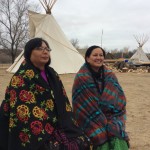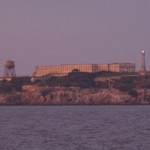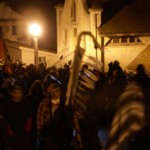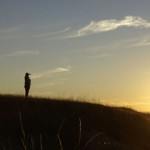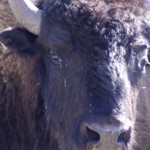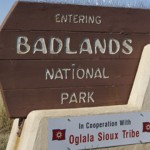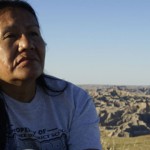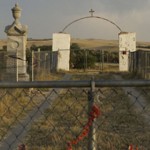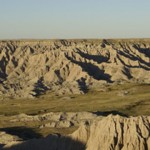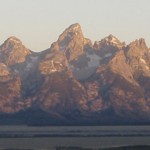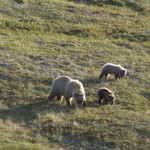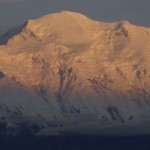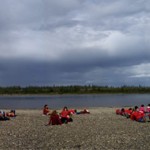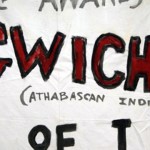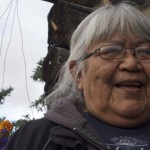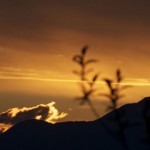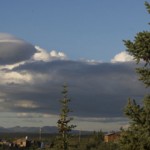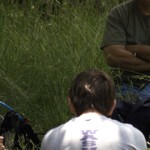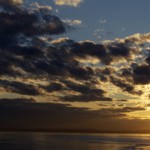Badlands National Park: Wounded Knee
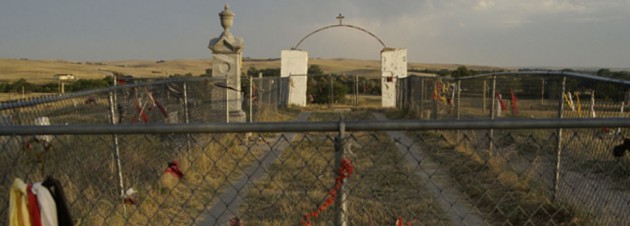
I came to Wounded Knee in Pine Ridge Indian Reservation, South Dakota on Saturday night. When I arrived, Doris Respect Nothing welcomed me into her arms. All these women I have worked with just take me in. I feel that I am the luckiest person on this planet. Here is an interesting story – the night I arrived, Doris said, “I had this dream in the past where I see some Asian people standing in front of me and I was with a group of our people. My grandfather was with us. He said that these people were here to help us so trust them. He spoke in Lakota language, not in English. When you called me and told me that you were from Japan, and told me about your project, I knew I meant to do this with you to help our people. This is meant to be.” I must do a good work that honors her trust by living up to my name.
Since Sunday, we talked for hours and she filled me in with quite a bit with what have happened here: both her own activist work with Badlands National Park and the Oglala Lakota history at Wounded Knee. On Sunday evening, she walked me to Wounded Knee mass grave where dead Lakota people from the massacre are buried. I found a monument which reads:
“This monument is erected by surviving relatives and other Ogallala and Cheyenne River Sioux Indians in memory of the Chief Big Foot Massacre December 29, 1890 COL Forsyth in command of US troops. Big Foot was a great chief of the Sioux Indians. He often said, “I will stand in peace till my last day comes.” He did many good and brave deeds. For the white men and red men. For many innocent women and children who knew no wrong died here.”
I saw 43 names carved on the monument. Doris said, “We don’t really know who are buried here. Those who survived the massacre were asked to confirm the dead. But they were never brought here to see the bodies. They were told to tell the military who were missing at the Episcopal Church in Pine Ridge. We know at least 250 people were killed, not 43.” Doris continued. “In our story, the massacre was planned, not an accident. The Hotchkiss guns were set up in this area so that they can shoot downward. They had even killed their own soldiers due to cross fire because they were drinking all night before they attacked our people.”
As we were leaving, a white couple showed up in a truck, parking right in front of the grave gate. Doris glanced the scene and said, “We need something here to educate people about the history and how they can respect this grave. For example, we like to see people parking on the road and walk up to the grave. We like to see the clean monument. People don’t know it is inappropriate to leave money, plastic cups and tobacco ties, which are prayer ties. They are not appropriate here because the protocol is to put it out of the way or they are meant to burn in the sweat lodge. One time I saw white people standing on top of the mass grave where our people were buried. They probably didn’t research before they came so they didn’t know. Another time, we saw a white man with a long beard and dressed in a black robe, praying at the grave. When my aunt saw him, she started screaming at him and told him to get out from here. It is because it was the black robes helped with the massacre of our people. He had a good intention but presented himself wrong. I told him, ‘right before the massacre happened, a priest from Catholic came and read a note, saying that this is their last reading to our people. The Catholic priest was wearing a black robe and had a long beard.’ The pain from the massacre is still very strong among our people. After I explained to him, he apologized and looked almost in tears. I told him that my aunt would come back here to kick you out so you better go.”
I agreed with her. It is my responsibility to research places before I go visit, but still there will be many things that I wouldn’t know. If Doris didn’t take me up there, I wouldn’t know any better. Doris said, “The National Park Service wants to manage the grave as a national historic site.” It sounded good at first but I learned that the Oglala Lakota nation has to give up 40 acres that surround the grave to the National Park Service to manage. “Here, nobody wants to do that. If we do, we will give up an opportunity to tell stories from our side.” Doris thinks that the best way to manage this issue is to have the tribal government to create an information center and hire people from here. That will provide the best educational opportunity for outsiders to directly learn the Wounded Knee massacre history from the Oglala Lakota people. I asked, “When will it happen?” She said, “The funding is always an issue. Even when we had funding a few years ago, the money disappeared and misused for something. The tribal government is corrupted and that is another issue that we have to deal with. Currently, we are revisiting the 1934 Act (called IRA, Indian Reorganization Act) and possibility of abolishing the constitution by laws to create government fits the people. This is a step we have to take to abolish the IRA and the tribal council, which is responsible to build the Wounded Knee massacre information center.”
As we walked back from the grave, I asked her if she is still angry from the history. Doris said, “I definitely had a phase when I was very angry and resentful. But I worked through it with a help of Lakota Way of Life, and by praying and attending spiritual gathering (Sun Dance). These helped me to remember the suffering that my people went through. Today is not as bad as what our ancestors had to endure. That gives me a hope.”
Doris has worked through her anger and understands our work has to come from a good place, not from anger. She gives me a hope. I adore her.
